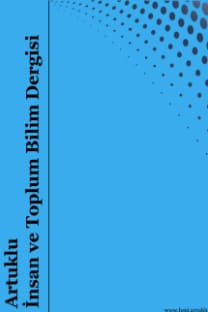İkidillik ve Beyin
iki dilliler, tek dilliler, beyin, dil
Bilingualism and the Brain
bilinguals, monolinguals, brain, language,
___
- Associated Press. Some facts about the world’s 6,800 tongues. 2001. Retrieved October 1, 2012, from http://articles.cnn.com/2001-06-19/us/language.glance_1_languages-origin-tongues?_s=PM:US
- Bialystok, E., Craik, F. I., & Freedman, M. (2007). Bilingualism as a protection against the onset of symptoms of dementia. Neuropsychologia. C. 45, S. 2, s. 459-464.
- Bialystok, E., Craik, F. I., Klein, R., & Viswanathan, M. (2004). Bilingualism, aging, and cognitive control: evidence from the Simon task. Psychology and aging, C. 19, S. 2, s. 290
- Bialystok, E., Craik, F., & Luk, G. (2008). Cognitive control and lexical access in younger and older bilinguals. Journal of Experimental Psychology: Learning, memory, and cognition, C. 34, S. 4, s. 859.
- Hernandez, A. E., Dapretto, M., Mazziotta, J., & Bookheimer, S. (2001). Language switching and language representation in Spanish–English bilinguals: An fMRI study. NeuroImage, C. 14, S. 2, s. 510-520.
- Hope, T. M., Parker Jones, Ō., Grogan, A., Crinion, J., Rae, J., Ruffle, L., ... & Green, D. W. (2015). Comparing language outcomes in monolingual and bilingual stroke patients. Brain, C. 138, S. 4, s. 1070-1083. https://www.nia.nih.gov/health/alzheimers
- Kovács, Á. M., & Mehler, J. (2009). Cognitive gains in 7-month-old bilingual infants. Proceedings of the National Academy of Sciences, C. 106, S. 16, s. 6556-6560.
- Luk, G., Green, D. W., Abutalebi, J., & Grady, C. (2012). Cognitive control for language switching in bilinguals: A quantitative meta-analysis of functional neuroimaging studies. Language and cognitive processes, 27(10), 1479-1488. C. 14, S. 2, s. 510-520.
- Marian, V., & Spivey, M. (2003). Bilingual and monolingual processing of competing lexical items. Applied Psycholinguistics, C. 24, S. 2, s. 173-193.
- Mechelli, A., Crinion, J. T., Noppeney, U., O'Doherty, J., Ashburner, J., Frackowiak, R. S., & Price, C. J. (2004). Structural plasticity in the bilingual brain. Nature, C. 431, S. 7010, s. 757.
- Mehler, J., Jusczyk, P., Lambertz, G., Halsted, N., Bertoncini, J., & Amiel-Tison, C. (1988). A precursor of language acquisition in young infants. Cognition, C. 29, S. 2, s. 143-178.
- Schweizer, T. A., Ware, J., Fischer, C. E., Craik, F. I., & Bialystok, E. (2012). Bilingualism as a contributor to cognitive reserve: Evidence from brain atrophy in Alzheimer’s disease. cortex, C. 48, S. 8, s. 991-996.
- Yayın Aralığı: Yılda 2 Sayı
- Başlangıç: 2016
- Yayıncı: Mardin Artuklu Üniversitesi
Hamamda Cinayet: Orta Çağ’da Siyaseten Katlin Popüler Bir Mekânı Olarak Hamamlar
Kişileştirme ve Didaktik Yaklaşım: "Gülün Romansı"
Patolojik Narsisizm: Duygusal İstismar ve "Gaslighting" Perspektifinden Kapsamlı Bir Değerlendirme
Mardin Evlerinde Mihrabiye Formlu İki Niş
Kişileştirme ve Didaktik Yaklaşım: "Gülün Romansı"
Uyur İdik Uyardılar, Alevîlik-Bektaşîlik Araştırmaları
